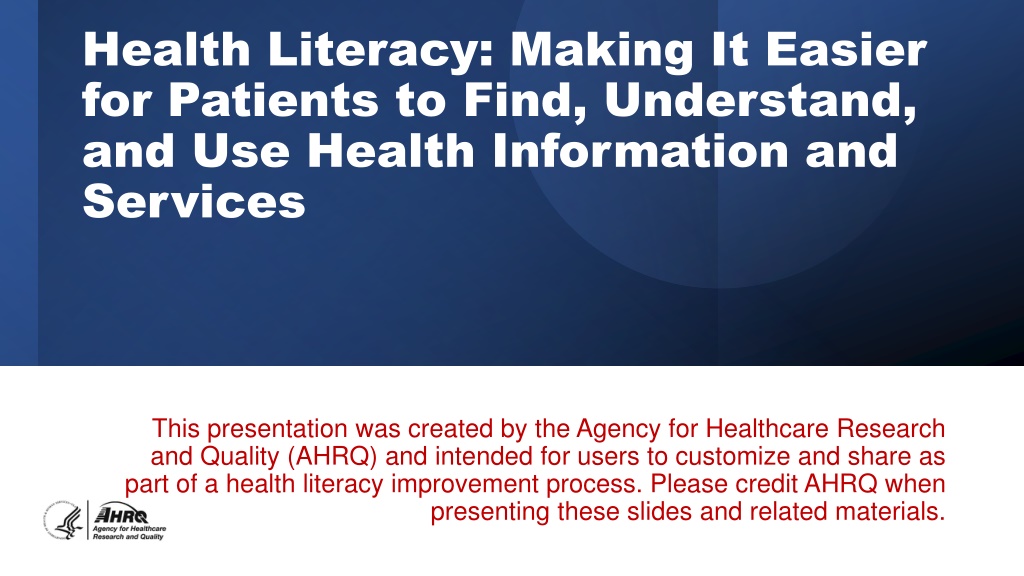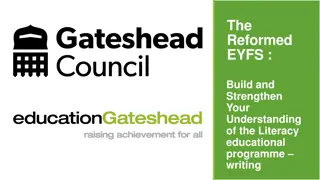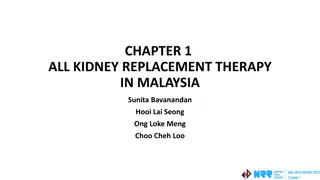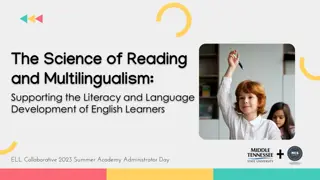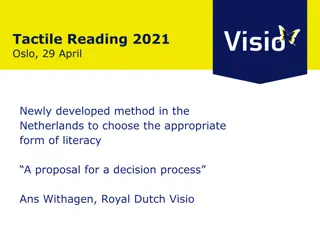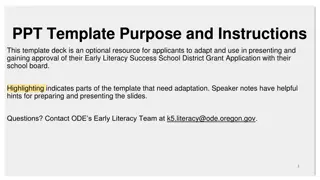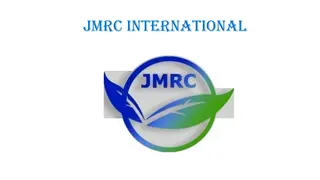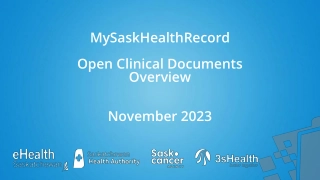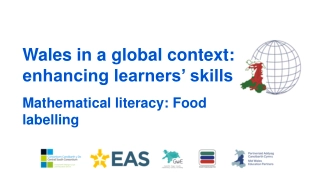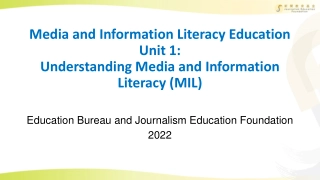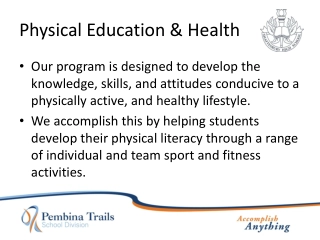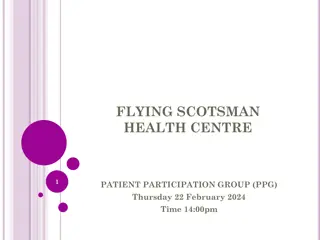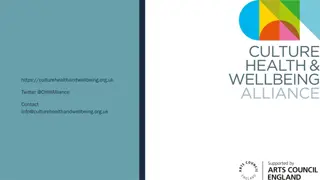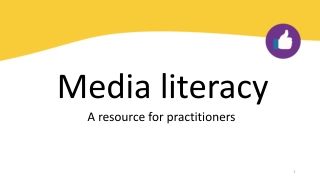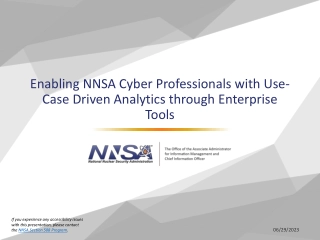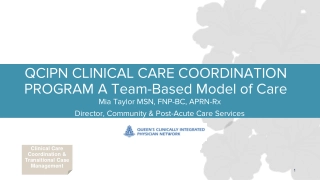Enhancing Health Literacy: Empowering Patients through Accessible Information
Improving health literacy is vital for patients to effectively navigate health information and services. This presentation by the Agency for Healthcare Research and Quality emphasizes the significance of understanding, finding, and utilizing health resources. It covers the importance of personal and organizational health literacy, strategies, and examples to enhance patient empowerment in making informed decisions for their well-being.
Download Presentation
Please find below an Image/Link to download the presentation.
The content on the website is provided AS IS for your information and personal use only. It may not be sold, licensed, or shared on other websites without obtaining consent from the author. Download presentation by click this link. If you encounter any issues during the download, it is possible that the publisher has removed the file from their server.
Presentation Transcript
Health Literacy: Making It Easier for Patients to Find, Understand, and Use Health Information and Services This presentation was created by the Agency for Healthcare Research and Quality (AHRQ) and intended for users to customize and share as part of a health literacy improvement process. Please credit AHRQ when presenting these slides and related materials.
Overview Health Literacy: What It Is and Why It s Important Health Literacy Strategies 2
Health Literacy: What It Is and Why It s Important We ll start with some common experiences. 3
Tell Health Literacy Story Start with a story (see notes for ideas about possible scenarios). 4
Quiz Which is an example of health literacy? (Choose all that apply) A. When people can read and understand health information. B. When people can act on health information to make informed decisions. C. When organizations make sure that people can find the health information they need. D. When organizations ensure that people can equitably access and use health services. 5
Two Kinds of Health Literacy Personal Health Literacy Organizational Health Literacy The degree to which organizations equitably enable individuals to find, understand, and use information and services to inform health- related decisions and actions for themselves and others. The degree to which individuals have the ability to find, understand, and use information and services to inform health-related decisions and actions for themselves and others. Definitions from Healthy People 2030 6
Health Literacy Is a Combination of Personal and Organization Health Literacy 7
Why Health Literacy is Important People need health information and services they can easily find, understand, and use to get and stay healthy. Prevent disease Get insurance Get services Choose tests and treatments Manage conditions 8
Many in the United States Struggle With Reading and Math Adults Ages 16-65 Low Literacy Low Numeracy 23% 33% Low Mid-Level High Low Mid-Level High Source: 2017 Program for the International Assessment of Adult Competencies 9
Not Just Reading and Math Written communication Numbers and math Health literacy includes: Spoken communication Navigating healthcare system Using health information 10
You Cant Tell By Looking Health Literacy in the United States Nearly 9 out of 10 adults have difficulty using everyday health information. Limited health literacy affects: All racial and ethnic groups. People of all ages. Even highly educated people. Source: U.S. Department of Education, Institute of Education Sciences, 2003 National Assessment of Adult Literacy 11
Anyone Can Experience Limited Personal Health Literacy Health literacy can change. People s ability to find, understand, and use health information and services is affected when they are: Tired Sick Anxious Overwhelmed Health literacy is a state not a trait. 12
Discussion Questions What have you noticed that would suggest patients may have a difficult time understanding what you say? What information do we give patients that you notice is hard to understand or use? 13
Organizational Health Literacy in the United States is Low Health information is routinely written at a level that the majority of adults cannot understand. Clinical teams frequently do not check patients understanding and do not follow up. There is a lack of communication among providers, so people have to coordinate their own care. Providers often do not check what barriers patients face and do not connect them to resources that could help. 14
What Happens If Organizations Do Not Address Health Literacy? (Afra) Bad health outcomes Afra Salah got birth control pills from her doctor. She did not read the dense, confusing handout. Afra thought the pills protected her from STDs. No one checked her understanding of STDs and how to prevent them. She wound up with chlamydia, which resulted in her not being able to have children. Afra Salah 15
What Happens If Organizations Do Not Address Health Literacy? (Ed) Medical errors, preventable hospitalizations Ed Williams doctor switched him to a new beta blocker. Ed did not realize he should stop taking his old medicine, and the doctor did not check his understanding. Ed wound up in the hospital from taking both medicines. Ed Williams 16
What Happens If Organizations Do Not Address Health Literacy? (Jose) Fewer preventive services, more disease Jose Torres doctor sent a message through the patient portal that he was due for a flu shot. Jose doesn t know how to log onto the patient portal. Jose lost his job when he was out sick with the flu. Jose Torres 17
What Happens If Organizations Do Not Address Health Literacy? (Terri) Skipped medicine, preventable hospitalizations Terri Nolan s asthma had been well controlled for years. After a severe attack landed her in the hospital, her doctor suggested increasing her controller medicine. Terri admitted she had only been taking her medicine once a week to save money. No one had asked if she had trouble affording her medicine. Terri Nolan 18
Discussion Questions: Stories Do these stories remind you of any of your patients? Can you think of a time when you and a patient didn t understand each other? What happened? 19
Health Literacy Strategies Let s talk about ways to improve health literacy. 20
Use Health Literacy Universal Precautions Structure health information and the delivery of care as if everyone may have limited health literacy. You can t tell by looking. People are busy. Let s not make people work hard to understand. Everyone appreciates and benefits from clear communication. AHRQ Health Literacy Universal Precautions Toolkit, 3rd edition 21
We Think We Are Being Clear The greatest problem with communication is the illusion it has occurred. - Attributed to George Bernard Shaw 22
Do Not Make Assumptions About: Health Literacy Culture Literacy Numeracy Medical terminology Medical concepts (e.g., contagion, titration) Body functions Language Western medicine Health beliefs Religious beliefs Health and cultural practices Diet and supplements Family and community roles 23
Improve Spoken Communication Related Tools Communicate Clearly: Tool #4 Use the Teach-Back Method: Tool #5 Be Easy to Access: Tool #7 Address Language Differences: Tool #9 Consider Culture: Tool #10 Encourage Questions: Tool #14 Healthcare Encounters Telephone Access Front Desk Billing 24
Clear Communication Get a qualified interpreter. Engage with your patients. o Be respectful and caring. o Invite patient participation. o Listen actively. o Encourage questions. Limit content and reinforce key points. Use plain, non-medical language (no jargon). Slow down. Be specific and concrete. Use pictures. Show how it s done. Use teach-back. Source: AHRQ Health Literacy Universal Precautions Toolkit, Tool 4
Pause, Listen, and Do Not Interrupt Patients are interrupted by their providers in the first 11 to 18 seconds of telling their story. (Singh Ospina et al. 2019) Listen for 60 seconds. 79 percent of diagnostic errors are related to the patient-clinician encounter. (Singh Ospina et al. 2013) Source: Toolkit for Engaging Patients To Improve Diagnostic Safety 26
Do Not Use Technical Terms Say Not Pain killer Analgesic Swelling Inflammation Feverish Febrile High blood pressure Hypertension Wound Lesion Injury Insult
Use Common, Everyday Language Say Not Use Utilize Enough Sufficient Helpful Beneficial Make worse Exacerbate Come back Recur About Regarding
Limit Content: Stop Information Overload What to know 40% to 80% of information shared in a primary care visit is immediately forgotten by patients There s a 50/50 chance that what is remembered is correct What to do Limit yourself to 1-3 key points and reinforce them. Focus on what patients need to know and do. Source: Kessels 2003 29
The Teach-Back Method Chunk and teach information. We ve gone over a lot of information, and I want to make sure I explained things clearly. So tell me, what do you think are the 3 most important things to know about diabetes? If patient teaches back correctly and there s more to explain Ask people to teach back in their own words or demonstrate. Allow them to consult material. If patient doesn t teach back correctly Re-teach using different words Source: AHRQ Health Literacy Universal Precautions, Tool 5
Encourage Questions Let patients know you expect questions. o What questions do you have? (NOT Do you have any questions? ) o This is the first time you are hearing about this condition, and I expect you have questions. What would you like to know more about? Use body language to invite questions. oSit, look, listen, show you have the time. Source: AHRQ Health Literacy Universal Precautions, Tool 14 31
Write Effectively and Use Easy-to-Understand Materials Forms Directions Messages Hallmarks of easy-to-understand writing: Clear purpose, logical flow. Everyday language, no jargon, active voice. No distracting content, visuals reinforce messages. Make numbers easy. Short sections, informative headings, large font size, bulleted lists, short lines, white space. Instructions Educational Materials 32
Discussion Questions: Communication What is the most important thing that you could change to promote better communication? What ideas do you have for changes we could make to improve patients and families understanding and use of health information and services? What will you do differently tomorrow? 33
